Engelmeier Memoire Part 2:
February 24, 2023
Civilian Marksmanship Program▸The First Shot▸Engelmeier Memoire Part 2:Inspired by the many adventures he experienced as a member of the Air Force Pistol Marksmanship Team back in the late 1980s and early 1990s, Dr. Robert “Doc” Engelmeier from Pittsburgh, Pa., created his own exposé. Documenting his excursions, including to Camp Perry, he goes into remarkable detail about being a competitor during that time period, the awards he accumulated and the friends he made along the way. The CMP will be posting the piece through a series on our online publication, The First Shot, featuring fascinating commentary and vintage photos for readers to enjoy.
This is the second installment of the series. Click here to read the introductory article.
My Start and a Daring Trip:
My first foray into military competition came along in 1971-1972. Upon my return from Vietnam, I was reassigned to Otis AFB on Cape Cod. I joined the base pistol team there which competed weekly in the Cape Cod Pistol League. That base team consisted of both Airmen and Coast Guard members.
The largest Coast Guard Air/Sea Rescue unit at the time was situated on Otis AFB. The team won the league championship in 1972, so we Air Force members of the team qualified to travel to Tindall AFB in Florida to compete in the Air Defense Command (ADC) Matches. Unfortunately, none of us qualified for the ADC Team that went on to the All-Air Force Matches that year.
It was at the ADC competition that I first saw individuals wearing “Leg” medals and Distinguished Pistol Shot badges on their uniforms. That was when I learned what those medals represented and how difficult they were to earn. It was also there that I set a goal to at least win a basic “Leg” medal at an Air Force Excellence-in-Competition Match.
Little did I know that “Leg” Matches were few and far between.
I didn’t compete in my first “Leg” Match until 1988, over 15 years later. Four of us from the Otis AFB team flew to the ADC Matches in an old C-54 former VIP plane that had seen better days. The plane had been commissioned six months before I was born in 1944. It was called the “Artic Star,” and its purpose was to resupply all the northern radar sites under the Air Defense Command.
The trip to Florida was without incident, though a bit bumpy. However, the return trip to Cape Cod was another story.
Upon take off, we feathered one of the four engines and were forced to make a quick landing at Warner Robbins AFB in Georgia. After spending hours on the ground, we again departed for Cape Cod. As we were approaching the D.C. area, that same starboard engine feathered again. This time, we headed to Andrews AFB for another emergency landing. As we were making a long final approach, an engine on the port side also froze. We did manage to land safely with just two of our four engines but had to spend two nights at Andrews AFB while they did some engine swapping. In the end, that trip from the Florida panhandle to Cape Cod took three days. A Greyhound bus would have been faster. I have no complaints though because we arrived home safely, and further, that adventure was a preview of the great times that were to come.
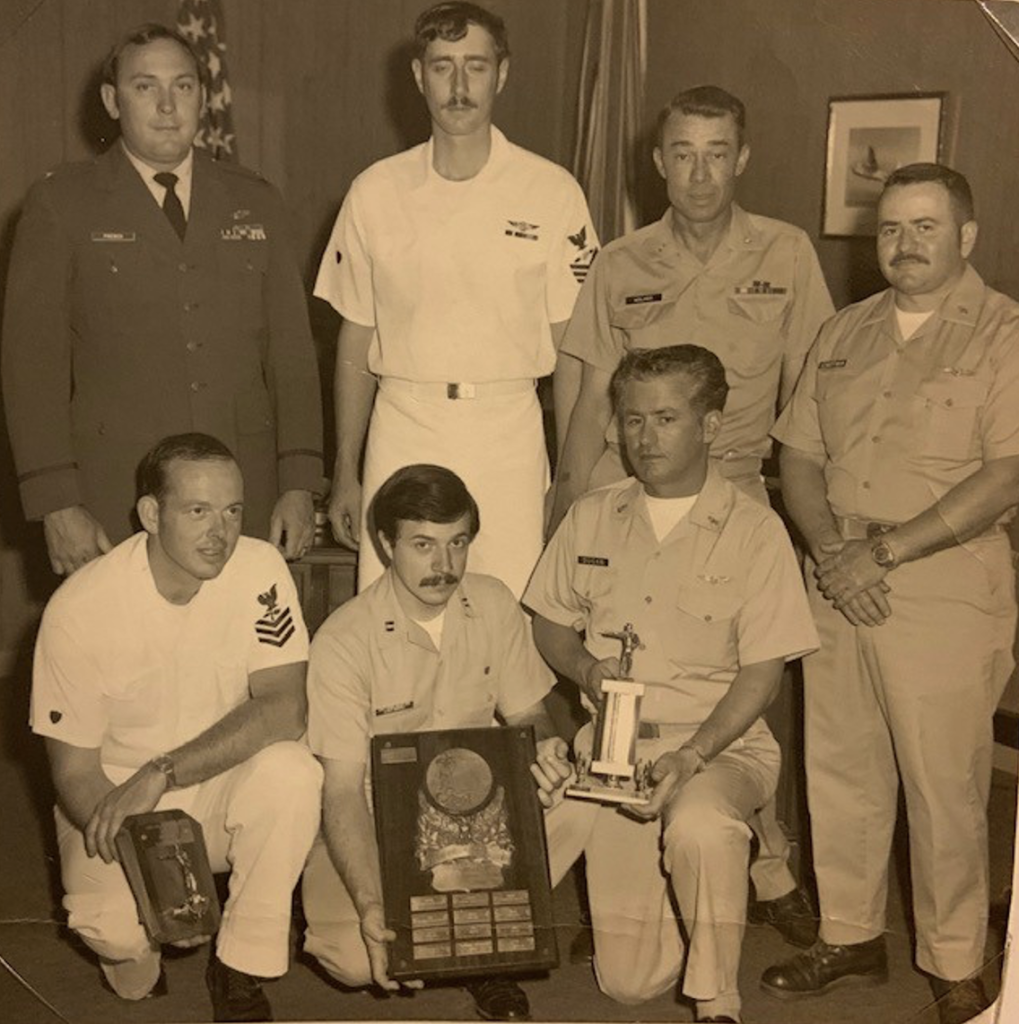
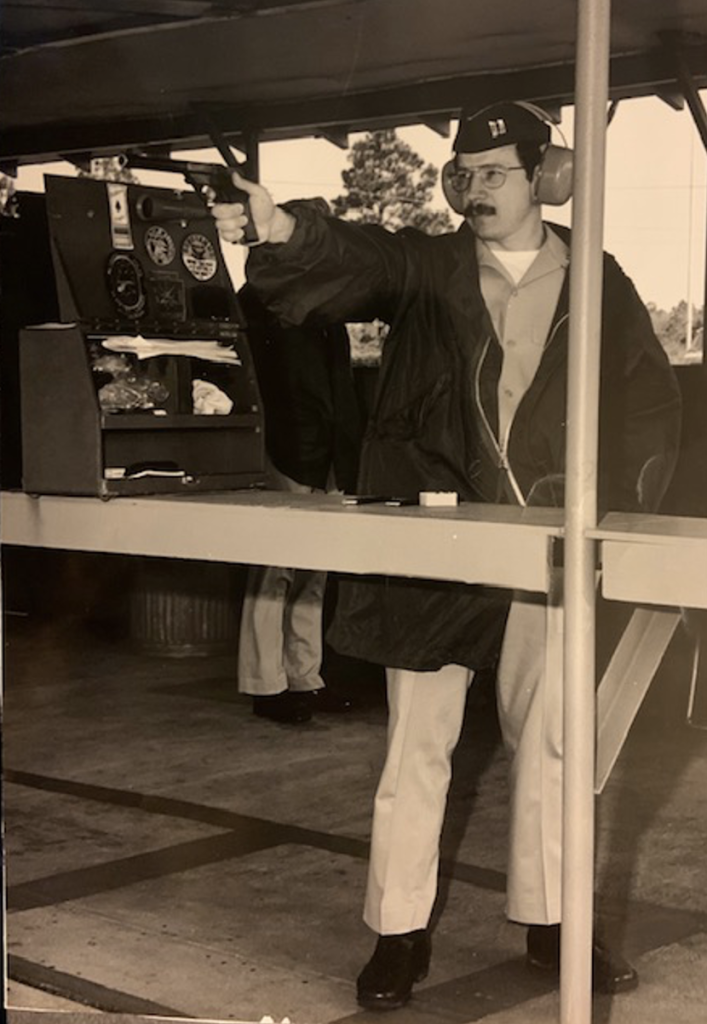
Heading Toward Distinguished and the National Matches:
The 1988 season was my first as a National Pistol Team member. On Jan. 21, The Air Force held an Excellence-in-Competition (EIC) Match at nearby Beale AFB in Northern California. These were active military only matches where competitors finishing in the top 10 percent received four “Leg” points toward the 30 points required for the Distinguished Pistol Shot badge. They were also awarded the USAF basic bronze “Leg” medal (EIC badge).
Participants fired the match with the standard issue handgun, which, at that time, was the .38 caliber, Smith and Wesson Model 15 Combat Masterpiece. The firearms and required ammunition were issued to all registered participants at the match.
I fired the match as an individual. My 288 score won the match and enabled me to achieve the goal that I had set some 16 years earlier.
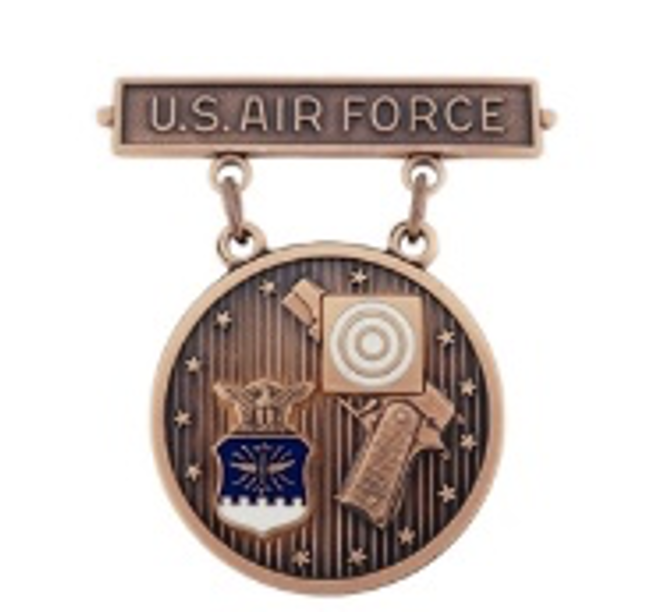
The first team match during the 1988 season was a Regional Match at South Mountain Range in Phoenix, Arizona. That match winner was Chip Kormas, our team captain, who was the most talented marksman I have ever known. He was an enormous help getting me started on my marksmanship journey.
Chip was transferred from Lackland AFB to Luke AFB that year. Unfortunately, due to “on the job politics,” he had trouble acquiring permission from his new unit supervisor to participate in competition. Following the 1988 season, he had to leave the team. I will always believe that Chip could have been a National Champion.
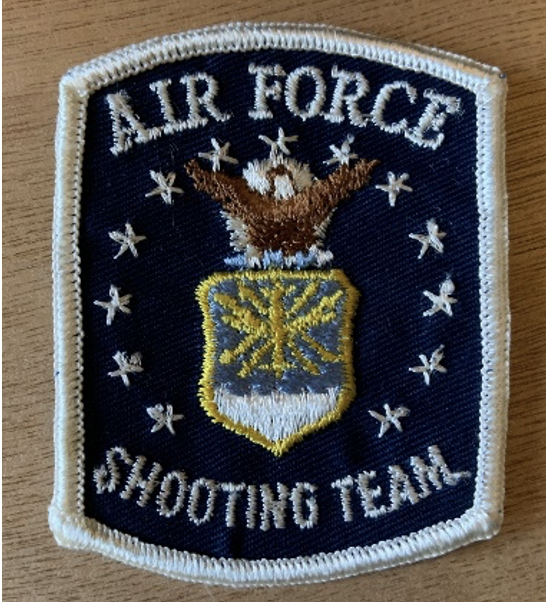
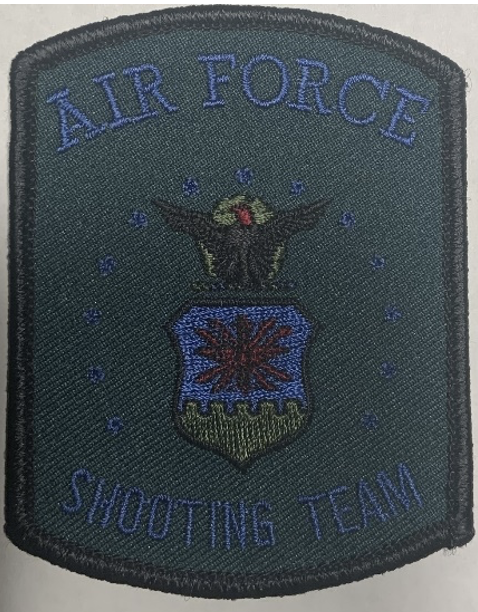
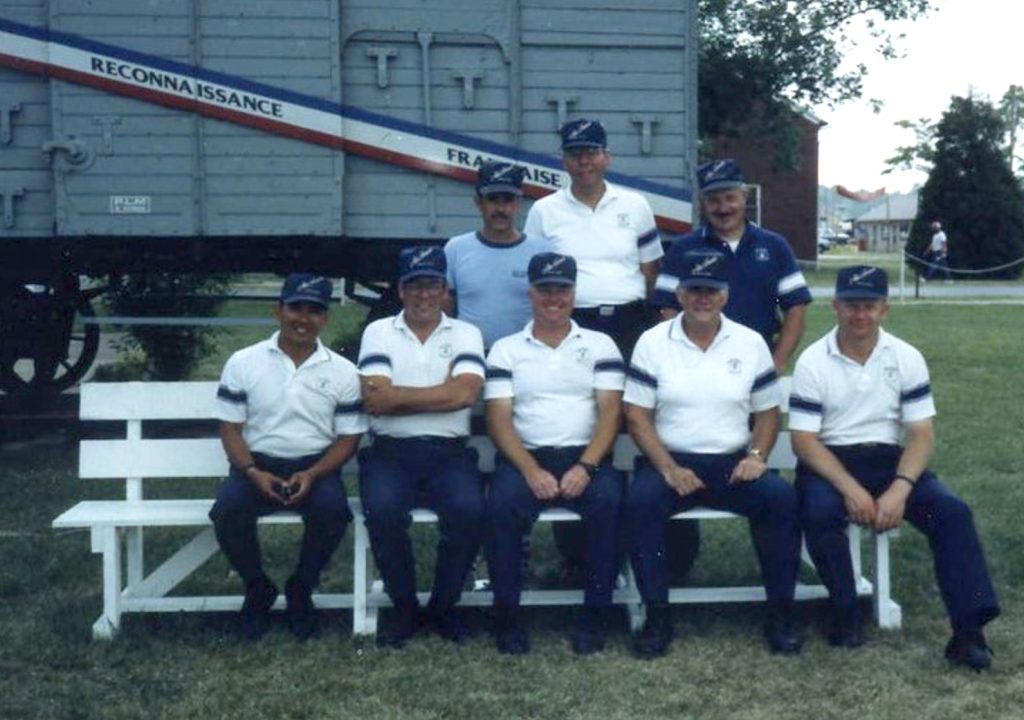
The next stop on our 1988 journey were the Interservice Matches in Nashville. That was one of my favorite ranges. It was built about a story and a half below ground level but was open overhead. That prevented wind effect and escaping range sounds. Unfortunately, that range was closed later that year.
Shortly thereafter, we traveled to warm-up matches in Canton, Ohio, then onto Camp Perry the very next week for my first exposure to the National Matches. There were 1,200 competitors. Each relay fielded 400 shooters lined up and firing at the same time.
Needless to say, the Hardball rapid fire relays were impressive.
I fired in four “Leg” matches that year but failed to finish in the top 10 percent in any of them. Unfortunately, I was not awarded any additional “Leg” points that season.
How “Leg” Events Work:
A “Leg” match is a very difficult, strictly judged competition that consists of 30 rounds of .45 caliber hardball fired from a “bare-bones” military M1911 pistol. The only permissible modification to these firearms is an adjustable rear site. Absolutely no other alteration is acceptable.
Trigger weight must not be less than four pounds. Each participant’s hardball gun is checked on the firing line just before the match. If it’s trigger cannot withstand a four-pound weight without discharging, that gun is disqualified.
All competitors are issued 30 rounds of .45 caliber hardball from the same ammunition lot. All shots are fired with only one hand. The slow-fire course consists of ten shots fired at 50 yards in 10 minutes. The timed-fire course consists of two, five shot strings fired at 25 yards, with 20 seconds permitted for each string of fire.
The final rapid-fire event consists of two, five shot strings fired at 25 yards, allowing just 10 seconds for each string of fire. NRA certified targets only must be used for both the 25- and 50-yard contests.
The match winner is awarded 10 points toward the Distinguished Pistol Shot Award, which requires a total accumulation of 30 points. The Shooter placing second is awarded eight points. The remaining competitors in the top 10 percent participating in the match are each awarded six points.
“Leg” Matches were only held at annual state championship and regional matches as well as the national and interservice championship matches. Needless to say, leg matches were few and far between. Often, participants traveled great distances to participate. Consequently, it commonly takes years for individuals to accumulate the necessary thirty points to qualify for the coveted Distinguished Marksman award. (CMP clubs now sanction EIC matches throughout the year – find a local match by visiting our website at https://ct.thecmp.org/app/v1/index.php?do=matchRegistrationListUpcoming&filter=event_type.)
1988 Jefferson Cup and Camp Perry:
I did manage to win a Jefferson Cup at the 1988 warm-up matches at Camp Perry by scoring highest in my shooting classification. My first exposure to Camp Perry that season was a reality check as to the Spartan living conditions there.
Before World War II, competitors were billited in large multi-man tents. The Matches were suspended during the war as Camp Perry was used as a Prisoner of War (POW) camp. That necessitated construction of the infamous “huts” at the base to house all the POWs.
Since the War, most National Match competitors have been accommodated in those huts, which have not been reknown for their coziness. During my time with the Air Force Team, we fortunately never had to stay in the huts. The U.S. Marine Corps Team was very generous and allowed us to share their barracks building at Camp Perry. Unfortunately, we had to occupy the second floor, which was usually sweltering. However, we had no complaints because that was still infinitely better than the exasperating huts.
I also learned how awful the food was at the Army chow hall at Camp Perry. We quickly learned to escape to nearby Port Clinton for fast food between and after our relays. Perhaps our favorite spot on the base was “Commercial Row” which included two rows of huts containing vendors selling match grade guns, ammunition and equipment. That was also where we could buy all the commemorative hats, tees, mugs and sweatshirts that we desired.
Along Commercial Row, I was able to meet and converse with acclaimed individuals like Bill Ruger, Jim Clark, noted firearms writer Charles Petty and famous Texas Ranger Bill Jordan. I purchased his book, “No Second Place Winner” there, which he personalized and dated for me. I was also able to converse with the leadership of companies like Champion’s Choice, Springfield Armory and Hi-Standard. Prices there were usually wholesale.
Another incredible experience for me at Camp Perry was touring the building that housed all the National Trophies. Some of those trophies dated from the late 19th century origins of the National Matches. All were unique works of art. They consisted of lots of marble, bronze and sterling silver. Many trophies were so massive that it took two or more individuals to move them. Several of those masterpieces were topped with full size, original Remington bronze sculptures.
Touring that building was equivalent to perusing an art gallery. In short, going to Camp Perry was not simply going to a match. It was a unique experience each time we were able to attend.
We ended the season later that summer by reporting to the selection camp for the 1989 season, which was held at the outstanding Army range at Ft. Sam Houston in San Antonio. It was at that training camp that I had the honor to meet the legendary Gail Liberty, retired member of the original Air Force National Pistol Team.
Gail was Double Distinguished and the most accomplished female shooter up until her time. She was training there for the upcoming Olympic Games. Unfortunately, she was not able to compete in those games due to a massive resurgence of her Multiple Sclerosis. I regret that I never had a chance to see her again.
Another great shooting friend, Ken Hutchins was selected at the camp to be the Team Captain for the upcoming season. I again made the team and took delivery of the Ball Gun that Bill Moore had built for me at the Gunsmith Shop. It was at that camp that a heavy weapons instructor named Gary Foster was also selected for team membership. Gary became my life long best military friend. He and I spent the remainder of my active Air Force years competing with the team and sharing many adventures.
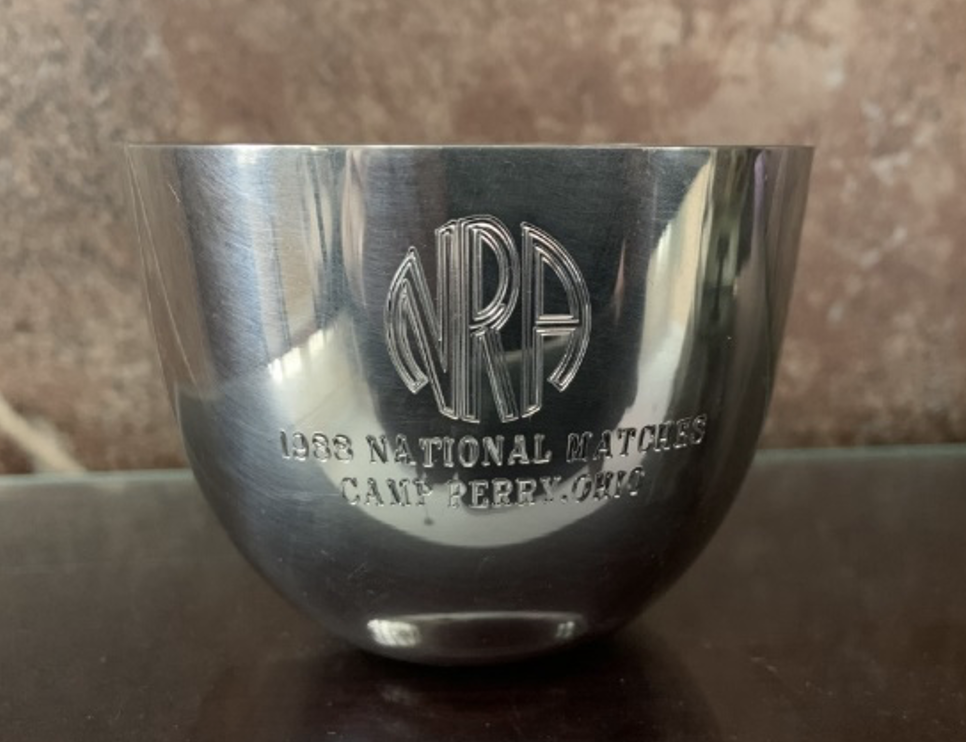
The last significant event of 1988 came late that year. I had a prosthodontic patient at Travis AFB who was a senior supervisor at the Base Supply Unit. He was also an enthusiastic shooter. Over the course of his treatment, we had become friends, and we discussed the team quite a bit.
When he learned that team members had to provide their own ammunition by reloading their spent brass, he told me about a massive supply of .45 Wadcutter and Hardball ammunition that the Air Force had been storing at an Army Base in another state. At that time, the Air Force no longer used M1911-A1 pistols though they still had a large number of them in storage.
In short, that ammunition was gathering dust while costing the Air Force significant funds to store it.
My patient worked his magic and arranged for a sizable lot of that ammunition to be shipped to Lackland AFB each month exclusively for team use. The only caveat was that we had to shoot it and not stock pile it in our bunker there. We were only too happy to comply.
From that point forward, we trained and competed with what seemed like an endless supply of .45 caliber rounds. None of us had to reload anymore.
Next, Doc discusses his stints at Travis Air Force Base, Hawaii and how he came to earn his Distinguished Pistol Badge. Click here to continue reading.
Thanks for the wonderful stories. I have been a member of the Canton range for close to 30yrs.
Thank you so much Doc for sharing your story and pictures. While I never was honored to competed at Camp Perry your stories and pictures reminded me of my similar era competing experiences at military bases. Especially the one from 1972 with the old style range box.
Very interesting.
Thank you for articles like this.
What an amazing story. Thank you so much for sharing and telling it like it is.
Is there a chance someday, the author can talk about the early days of using the M9 for matches?
Thank you.
Correction – 1988 photo of US Air Force National Pistol Team in this article did not include TSgt Chip Kormas. Individual in the center is TSgt Steve Farnum. I am in the front row first person from the left.
Front row on the far right looks like it may be MSgt Jim-Bob McCarty. Another great bullseye pistol shooter.
And the author (Doc, not me) is in the back row on the right. With the blue shirt.
Thanks so much for publishing ‘Docs’ memiors.
As a civilian, these are priceless to learn of leg points and the whole structure of competition.
Revives a thought to one day attend Camp Perry with my 40 Y/O son and some old rifles.
He is an ace in the gravel pit, but this would open up a new world for us both.